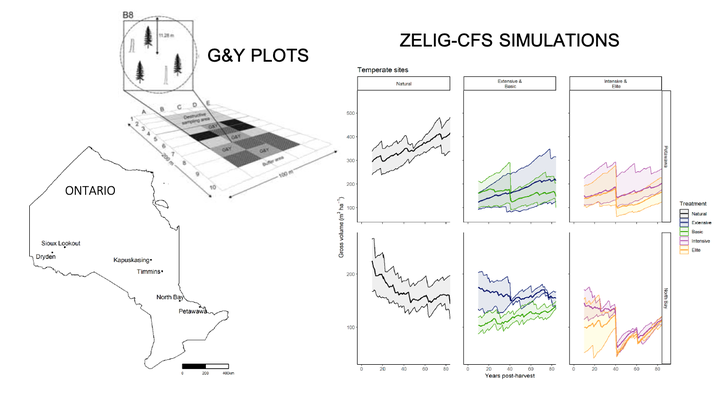Simulating the Effects of Intensifying Silviculture on Desired Species Yields across a Broad Environmental Gradient

Abstract
In the past two decades, forest management has undergone major paradigm shifts that are challenging the current forest modelling architecture. New silvicultural systems, guidelines for natural disturbance emulation, a desire to enhance structural complexity, major advances in successional theory, and climate change have all highlighted the limitations of current empirical models in covering this range of conditions. Mechanistic models, which focus on modelling underlying ecological processes rather than specific forest conditions, have the potential to meet these new paradigm shifts in a consistent framework, thereby streamlining the planning process. Here we use the NEBIE (a silvicultural intervention scale that classifies management intensities as natural, extensive, basic, intensive, and elite) plot network, from across Ontario, Canada, to examine the applicability of a mechanistic model, ZELIG-CFS (a version of the ZELIG tree growth model developed by the Canadian Forest Service), to simulate yields and species compositions. As silvicultural intensity increased, overall yield generally increased. Species compositions met the desired outcomes when specific silvicultural treatments were implemented and otherwise generally moved from more shade-intolerant to more shade-tolerant species through time. Our results indicated that a mechanistic model can simulate complex stands across a range of forest types and silvicultural systems while accounting for climate change. Finally, we highlight the need to improve the modelling of regeneration processes in ZELIG-CFS to better represent regeneration dynamics in plantations. While fine-tuning is needed, mechanistic models present an option to incorporate adaptive complexity into modelling forest management outcomes.